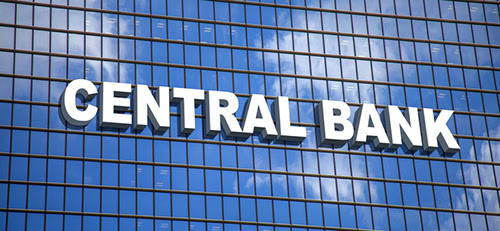The American Central Bank (Fed) is attacking inflation, which is exploding and breaking records, but this poses another threat to the world’s largest economy: a recession.
The central bank has a primary ambition which is to make a “soft landing”, said its chairman, Jerome Powell.
Their ambition is to alleviate price pressures, despite ongoing global supply difficulties and the crisis in Ukraine that has sent gasoline and grain prices soaring, while preserving economic growth.
A surgical job with “fine-tuning”, summarizes David Wessel, a long-time Fed observer for the Brookings Institution.
America’s economic powerhouse has tamed the COVID-19 pandemic and is posting solid growth and record job gains, spurred by generous government support and the action of the Fed, which in March 2020 lowered its key interest rates to zero to support consumption.
Despite the U.S. rebound, the U.S. economy has faced a number of challenges, from new waves of viruses and shortages of goods and workers, which are pushing up prices, to the crisis in Ukraine.
In order to curb the consumption and investment spree of American consumers and businesses, the powerful Federal Reserve began raising its key interest rates in March, leading commercial banks to also increase the cost of the money they lend to their customers.
The central bank has a primary ambition which is to make a “soft landing”, said its chairman, Jerome Powell.
Their ambition is to alleviate price pressures, despite ongoing global supply difficulties and the crisis in Ukraine that has sent gasoline and grain prices soaring, while preserving economic growth.
A surgical job with “fine-tuning”, summarizes David Wessel, a long-time Fed observer for the Brookings Institution.
America’s economic powerhouse has tamed the COVID-19 pandemic and is posting solid growth and record job gains, spurred by generous government support and the action of the Fed, which in March 2020 lowered its key interest rates to zero to support consumption.
Despite the U.S. rebound, the U.S. economy has faced a number of challenges, from new waves of viruses and shortages of goods and workers, which are pushing up prices, to the crisis in Ukraine.
In order to curb the consumption and investment spree of American consumers and businesses, the powerful Federal Reserve began raising its key interest rates in March, leading commercial banks to also increase the cost of the money they lend to their customers.
 |
This first increase, of a quarter of a percentage point (0.25%), will be followed by several others. And several Fed officials, including its chairman, have warned that they could be more aggressive in the coming months, and raise rates by half a percentage point directly, one or more times.
Financial markets around the world have fallen in recent days as even Lael Brainard, the only Democratic governor known for her accommodative stance on monetary policy, called slowing inflation “paramount”.
These firm attitudes show that Fed officials are “more likely to do too much than too little”, observed David Wessel.
For the Fed, like many other economists, was surprised by the speed at which inflation rose at the end of last year, driven largely by the auto and housing sectors.
In February, inflation reached its highest level since 1982, at 6.4% over one year according to the PCE index, favoured by the Fed, and 7.9% according to another index, the CPI, on which pensions are indexed.
On the other hand, the central bank has several plans B, and will also reduce the size of its balance sheet. That is, it will stop injecting millions of dollars into the economy and let the treasury bills and other assets it has bought since the beginning of the pandemic to support the smooth functioning of the markets mature without being renewed.
The central bank is expected to begin this process at its next meeting in May, and to move much faster than it did after the 2008 financial crisis.
 |
The situation is “very different” from the 1970s
The question, however, is what effect this action, coupled with rate hikes, will have, which has never happened before. “It’s tricky,” commented David Wessel, who notes, however, that given the strength of the economy, “a mild, short recession … could be trade-off policymakers are willing to make” to beat inflation.
Be careful, because this situation obviously raises the spectre of the 1970s, when an inflationary spiral and the oil crisis pushed the central bank to drastically increase interest rates to provoke a recession and bring prices down.
But the current situation is “very different,” says Dana Peterson, chief economist at the Conference Board, who points to a strong economy and labor market, and notes that the Fed has enhanced its credibility in fighting inflation.
Bank managers are looking at all the factors “and really want to calibrate this” to achieve a soft landing, and the Fed “will do everything in its power, not to +go too far,” she explained.
As a result, the central bank economist acknowledged that even with the best will in the world, cannot control the obstacles that have led to these supply difficulties, including the lingering pandemic.



Comment here